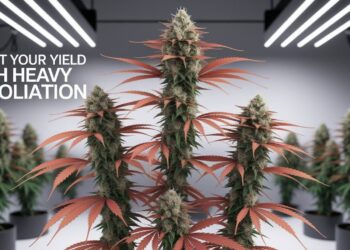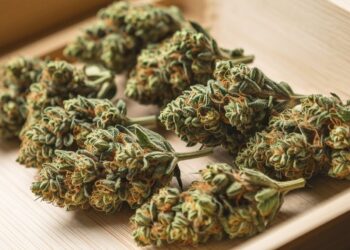Are your cannabis leaves turning yellow or showing brown edges? That’s often a sign of potassium deficiency, one of the most common problems growers face. I’ve been growing cannabis for more than ten years, and I’ve helped many people spot and fix this exact issue. The good news? It’s fixable, and usually faster than you think.
In this guide, I’ll show you how to identify early warning signs, explain why potassium levels drop, and share simple, effective ways to fix the problem. You’ll also learn how to stop it from happening again. The tips you’ll find here are based on real results, not guesswork.
These are steps I’ve used myself and taught others with great success. Don’t let poor nutrition ruin your plants. By the end of this article, you’ll feel confident correcting potassium deficiency and keeping your growth on track.
Why Potassium is Critical for Cannabis Plants
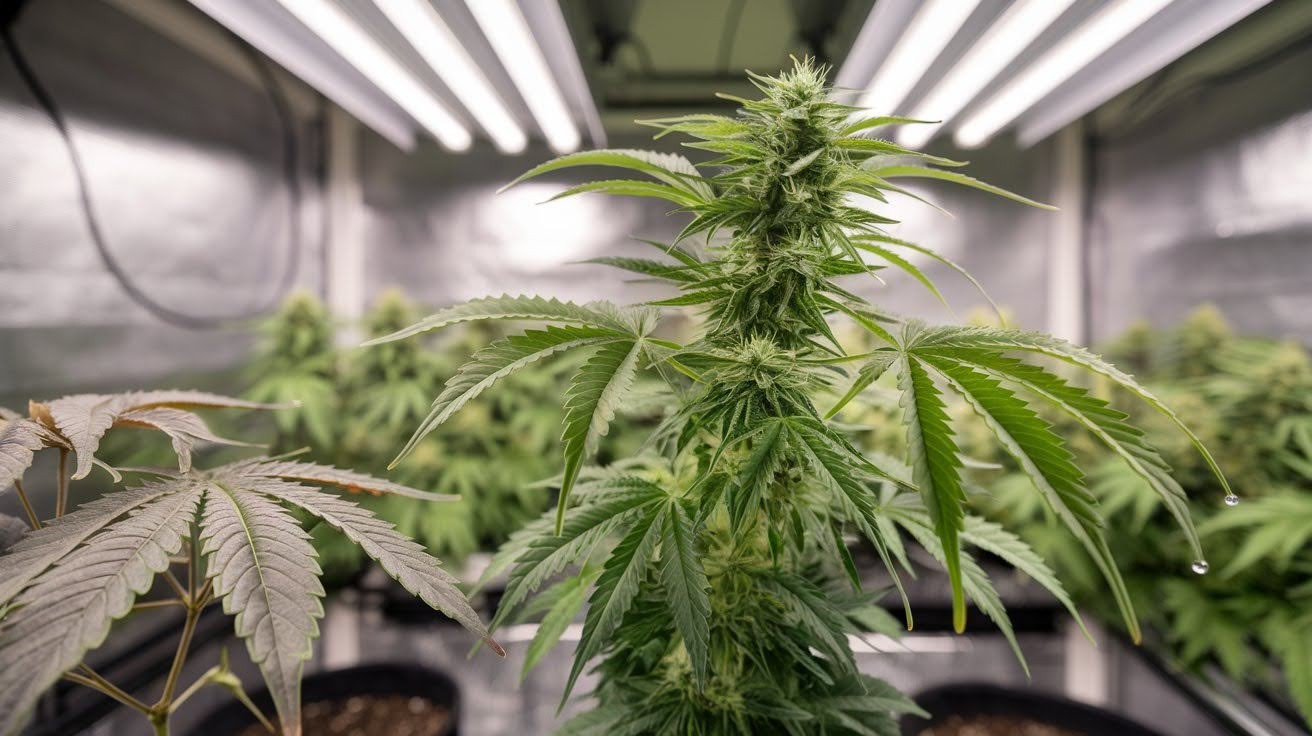
Think of potassium as your plant’s multitool. It handles dozens of jobs that keep your cannabis healthy and strong. Stomatal regulation comes first.
Potassium controls the tiny pores on leaves that let air in and water out. No potassium? Your plants can’t breathe properly. Enzyme activation is subsequent.
This mineral powers the chemical reactions that create energy in plant cells. It’s like the spark plug in your car engine. Osmoregulation keeps plants standing tall.
Potassium helps maintain water pressure inside cells. Without it, your cannabis will droop and wilt. Water transport moves nutrients from roots to buds.
Think of potassium as the delivery system for everything your plant needs. Here’s what most growers don’t know: Potassium moves around inside your plant.
When supplies run low, older leaves give up their potassium to feed new growth. That’s why symptoms start on the lower leaves first.
Your plant sacrifices the bottom to save the top. Research shows cannabis needs 40-80 ppm of potassium for best growth.
Spotting Potassium Deficiency: Visual Warning Signs
Your cannabis plants are talking to you. You need to know their language.
Early Stage Symptoms (Stages 1-2)

Yellow leaf edges are your first clue. Check the older, lower leaves first. That’s where potassium problems always start. Brown, burnt-looking tips come next.
Those yellow edges turn crispy and brown. It looks like someone took a lighter to your leaves. Interveinal chlorosis sounds fancy, but it’s simple.
The spaces between leaf veins turn yellow while the veins stay green. Think of it like a skeleton leaf. Timeline matters.
You’ll see these signs within 6 weeks of the deficiency starting. Early detection saves your crop.
Advanced Stage Symptoms (Stage 3)
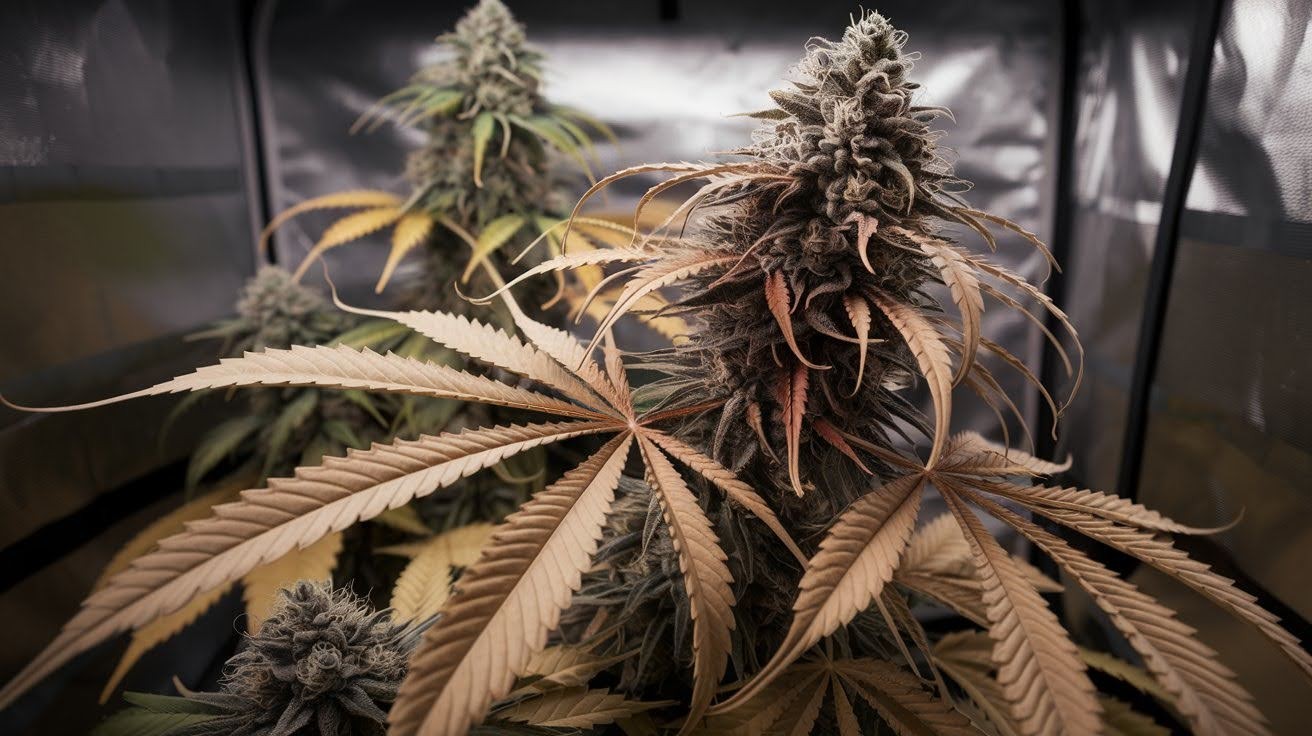
Don’t let it get this far. But if you do, here’s what to watch for. Severe necrosis means dead tissue patches. Brown spots that look like disease but aren’t.
Leaf curling happens when leaves curl upward and feel brittle. They’ll break if you touch them.
Weak stems can’t hold up your plant anymore. This is especially bad during flowering when buds get heavy.
Stunted growth slows everything down. Your plant looks tired and small. Poor flower development hits you where it hurts.
Smaller buds, less density, weaker potency. Nobody wants that.
Root Causes: Why Cannabis Develops Potassium Deficiency
It’s not always about what you’re feeding. Sometimes it’s about what’s blocking absorption.
Primary Nutritional Factors
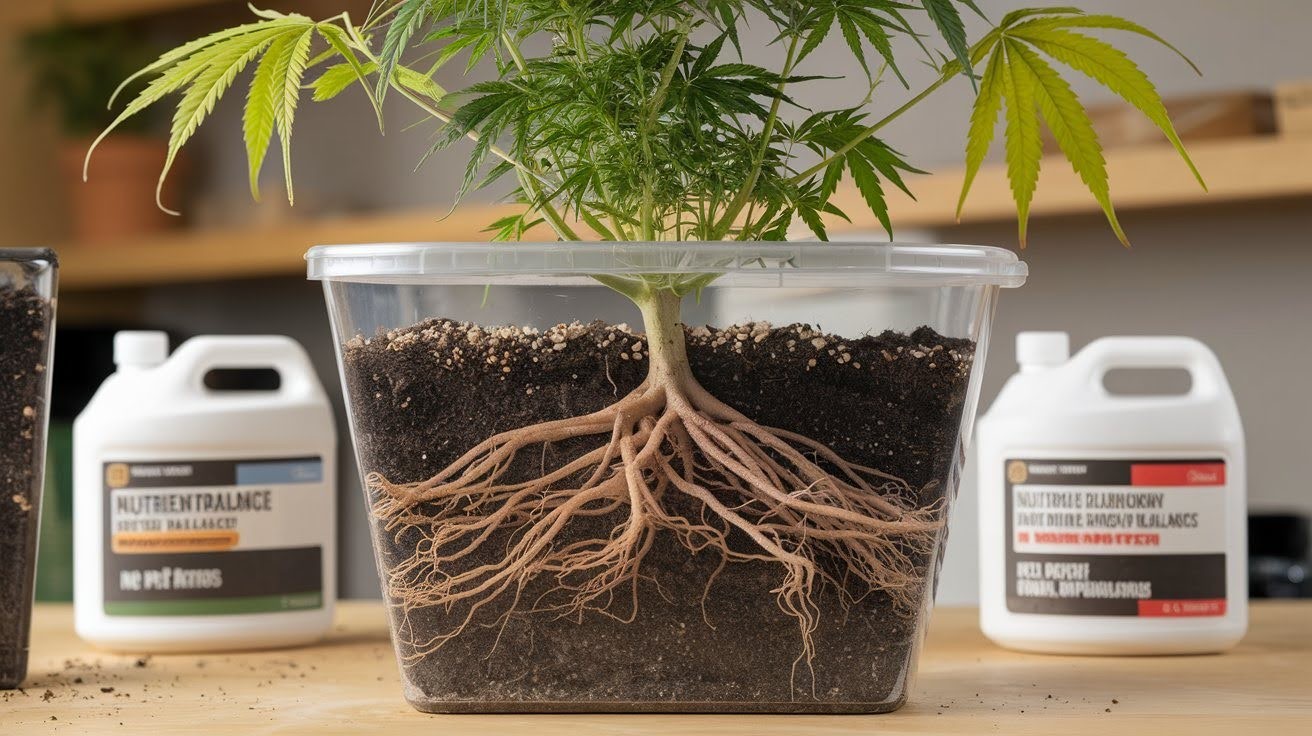
Insufficient feeding is the apparent culprit. Your plants need potassium-rich fertilizers, especially during flowering. Wrong fertilizer ratios trip up many growers.
That N-P-K balance on the bottle? It matters more than you think. Nutrient competition happens when other minerals fight for space. Too much calcium, magnesium, or sodium blocks potassium uptake.
Environmental Blocking Factors
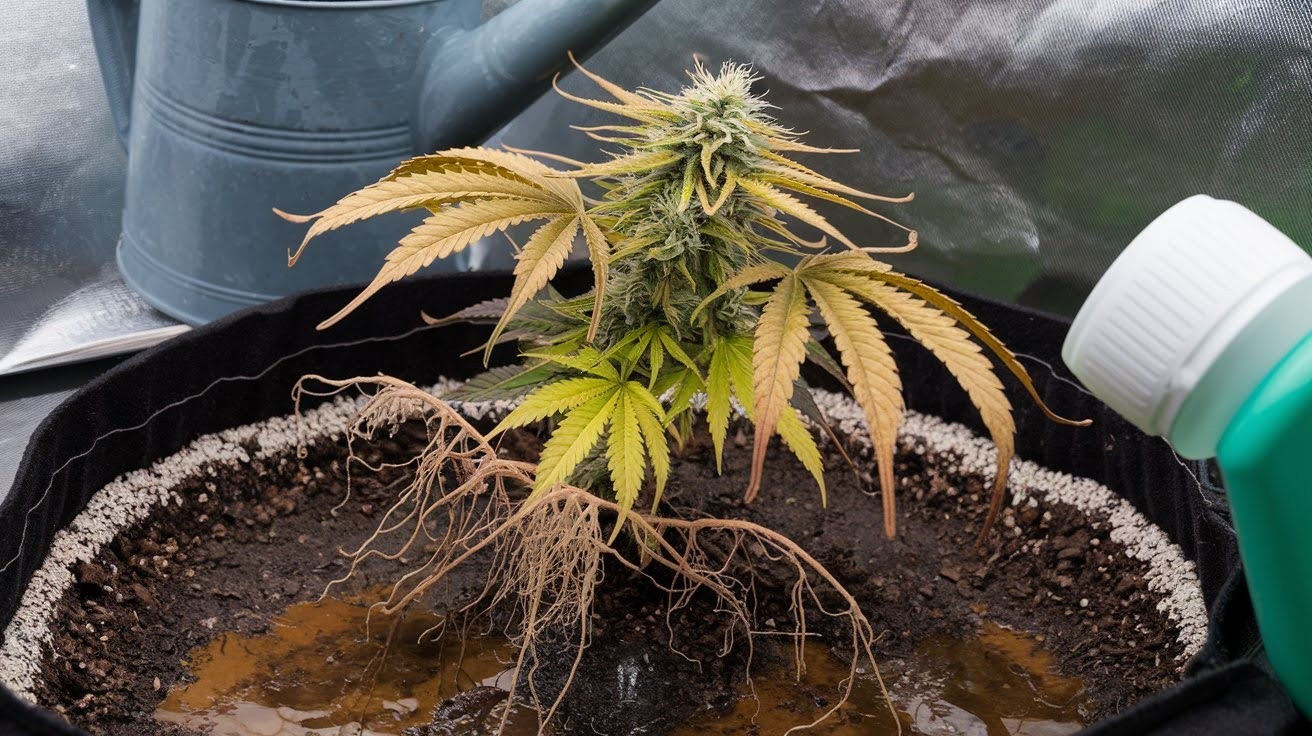
Overwatering does double damage. It washes nutrients away and drowns roots. Wet roots can’t absorb properly. High salinity from excess fertilizer or salty water creates problems.
Your plants can’t drink when the water is too concentrated. Poor soil structure means compacted dirt. Roots can’t spread out to find the potassium they need.
Fast Treatment Solutions: Stop the Damage Now
Time is your enemy here. Every day you wait, more leaves die.
Immediate Emergency Response (24-48 hours)
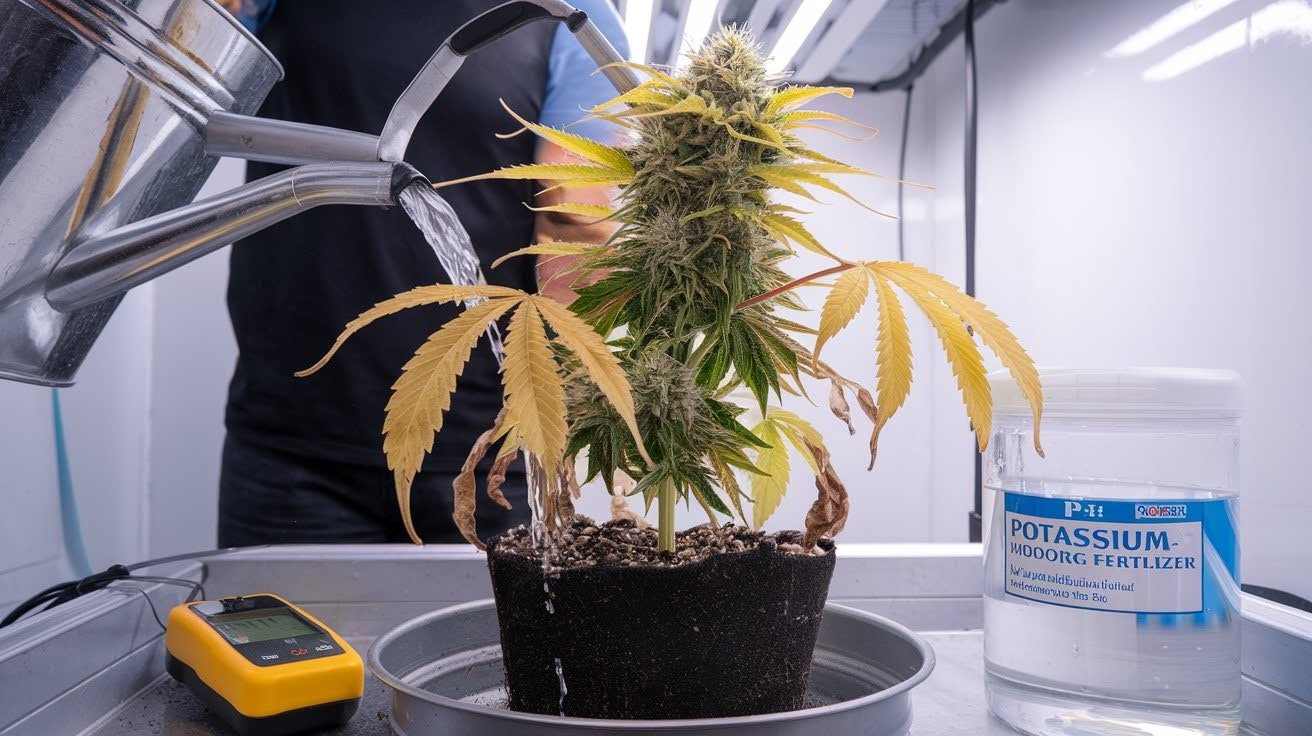
Step 1: Diagnose correctly. Don’t guess. Rule out light burn, nutrient burn, or lockout first. These look similar but need different treatments.
Step 2: Flush your growing medium. Use pH-balanced water at 3 times your pot capacity. This clears out any salt buildup that’s blocking potassium absorption. Here’s the key part: Don’t just flush and walk away.
Step 3: Apply fast-acting potassium fertilizer as a root drench. This gets nutrients directly to the roots.
Best options include potassium sulfate at 5-10 grams per 2.5 gallons of water. Potassium nitrate works, too, if you can find it.
pH correction matters during treatment. Target 6.0-7.0 for soil growers or 5.5-6.5 for hydro systems. Wrong pH blocks everything. I’ve saved plants in 48 hours using this exact method.
The key is acting fast and following each step in order. Don’t skip the flush. I see growers jump straight to feeding, but that often makes things worse.
Foliar Feeding for Rapid Uptake
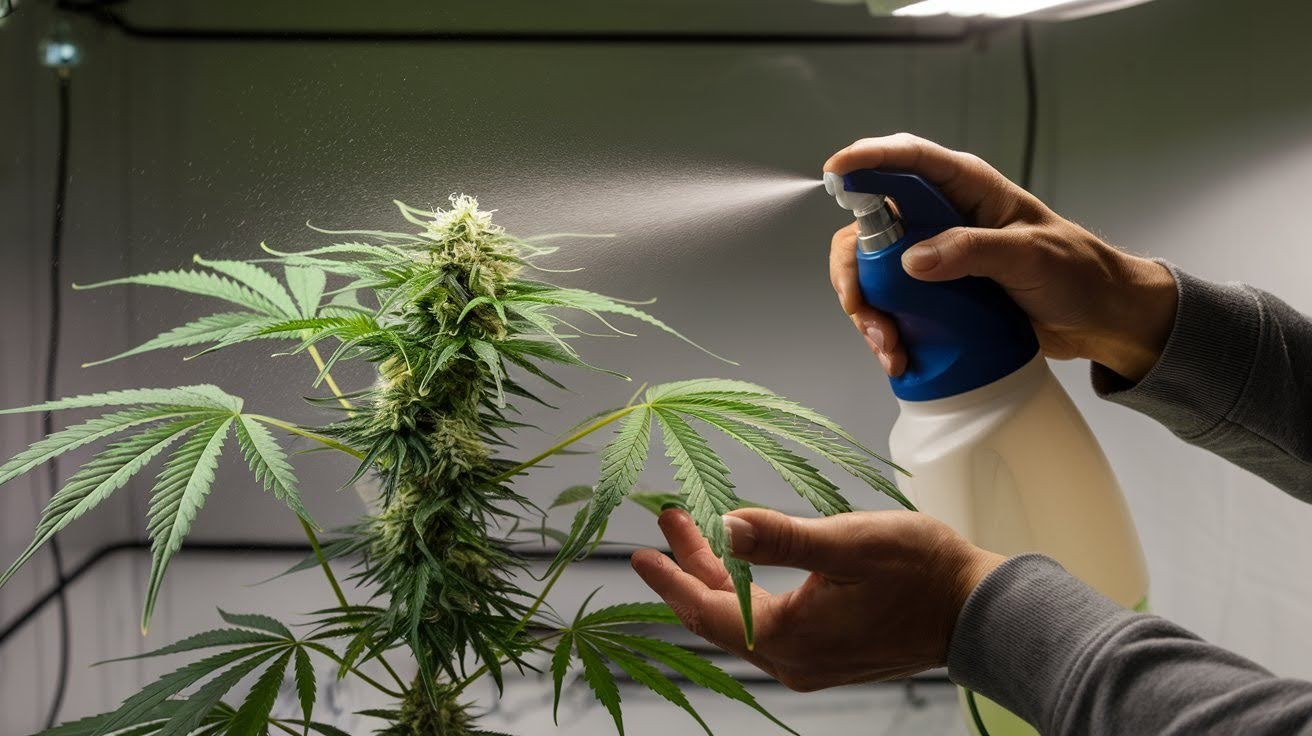
When roots fail, leaves can save the day. Foliar feeding gets potassium directly into your plant through leaf pores.
Why foliar works: It skips the root system completely, no pH problems, no nutrient competition, no soil issues.
The application method is simple. Mix 2% potassium sulfate solution and spray it on. That’s about 20 grams per liter of water.
Timing matters. Early morning or late evening only. Midday sun will burn wet leaves every time.
Frequency: Every 2-3 days until you see improvement. Please don’t overdo it.
Stage-Specific Emergency Protocols
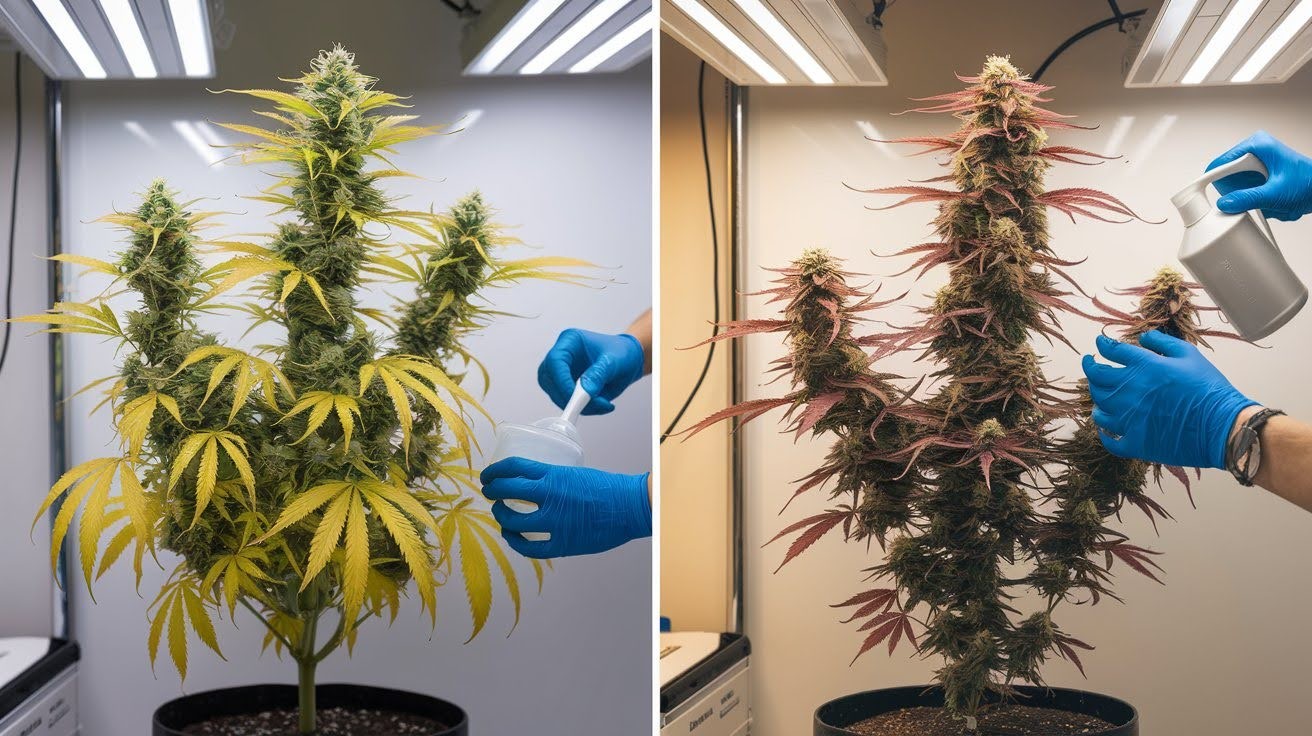
Different growth stages need different approaches. What works in veg can harm flowering plants. The vegetative stage needs 40-80 ppm potassium.
Start low and increase gradually. Plant shock slows recovery. The flowering stage demands more. Increase to 156-234 ppm for maximum recovery.
Your buds are forming and need the extra boost. Critical flowering weeks are weeks 3-6. Add PK boosters during this time for proper bud development.
Recovery monitoring starts now. Watch new growth for 4-7 days. New leaves should look healthy and green.
I’ve seen plants bounce back in 5 days using this method. The key is matching your treatment to your plant’s growth stage.
Common Mistakes That Slow Recovery
Even experienced growers mess this up. Here’s how to avoid the biggest traps.
Diagnosis Errors
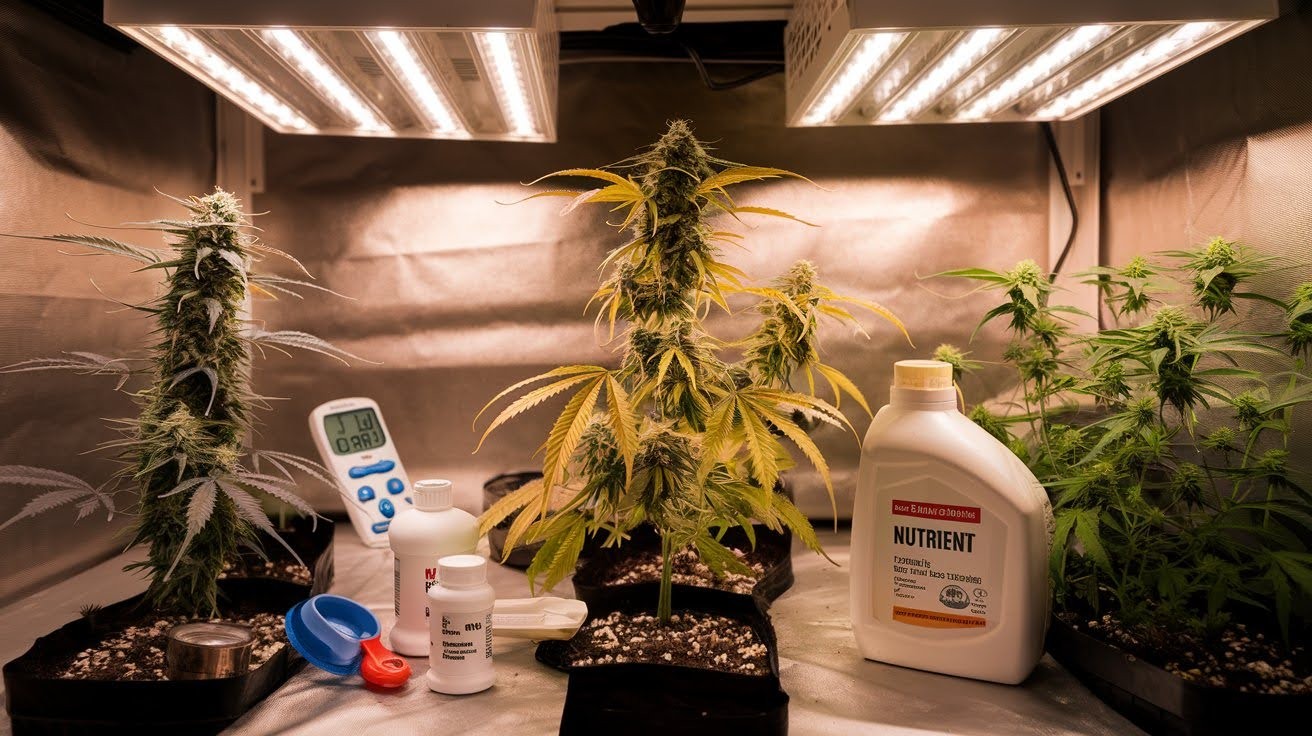
Light burn confusion trips up many people. Light burn hits the upper leaves first. Potassium deficiency starts on the lower leaves. Nutrient lockout means your plant can’t absorb what’s already there.
You have plenty of nutrients, but the wrong pH blocks everything. Overfeeding response makes things worse. Adding more nutrients when uptake is broken creates more problems.
Treatment Mistakes
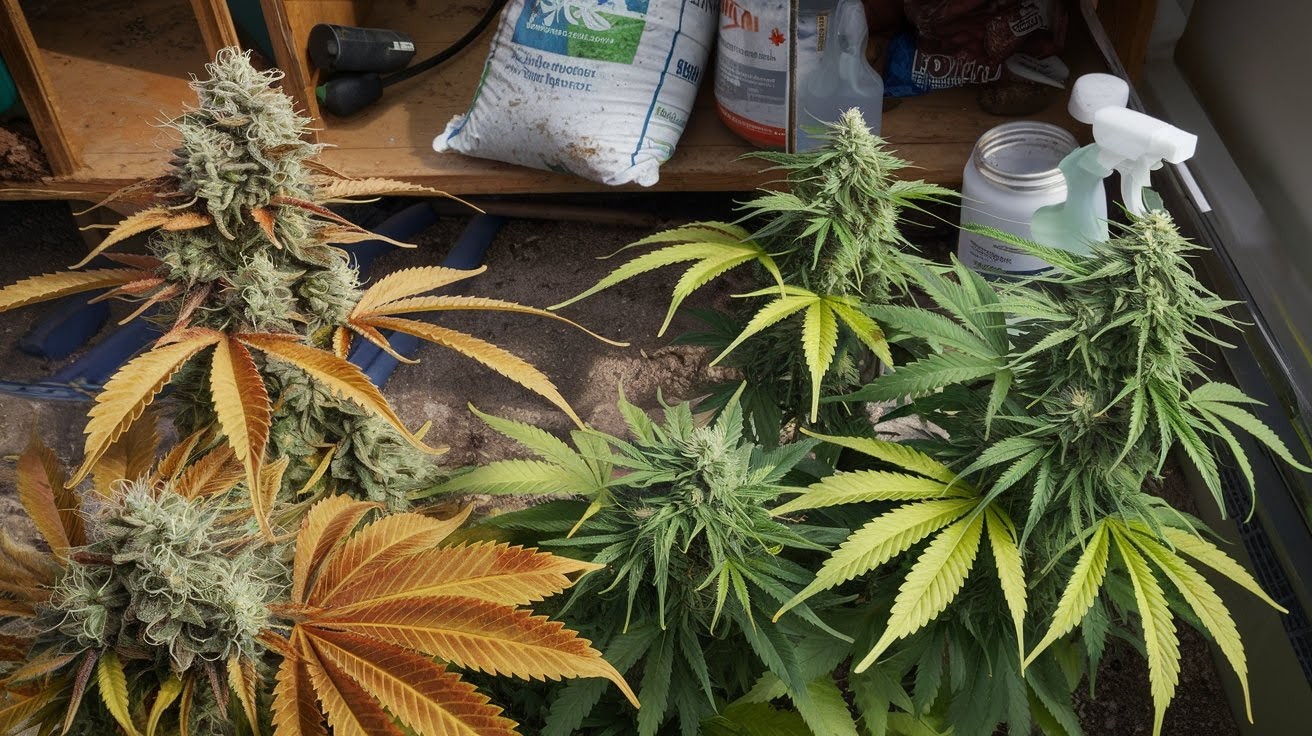
Overdosing with potassium blocks calcium and magnesium. Your plant trades one problem for three new ones. Wrong timing during foliar spraying causes leaf burn.
Hot sun plus wet leaves equals crispy cannabis. Ignoring the root cause wastes your time. Fix pH problems and overwatering issues first. Treating symptoms without fixing causes never works.
Monitoring Recovery and Success
Recovery happens in stages. Know what to expect and when.
Recovery Timeline
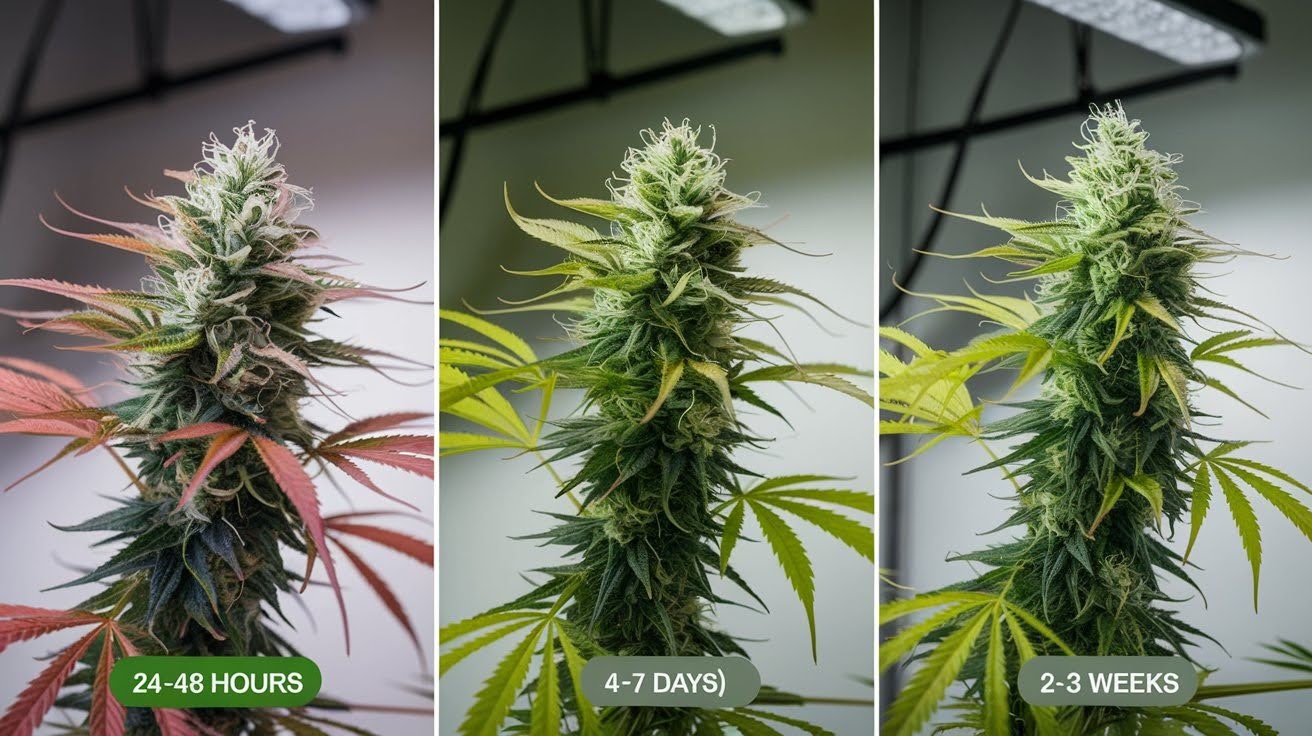
24-48 hours: Your treatment should stop new damage. No more leaves are getting worse.
4-7 days: New growth shows healthy green color and better strength. This is your first real victory sign.
2-3 weeks: Full recovery with strong growth coming back. Your plant looks healthy again.
Success Indicators
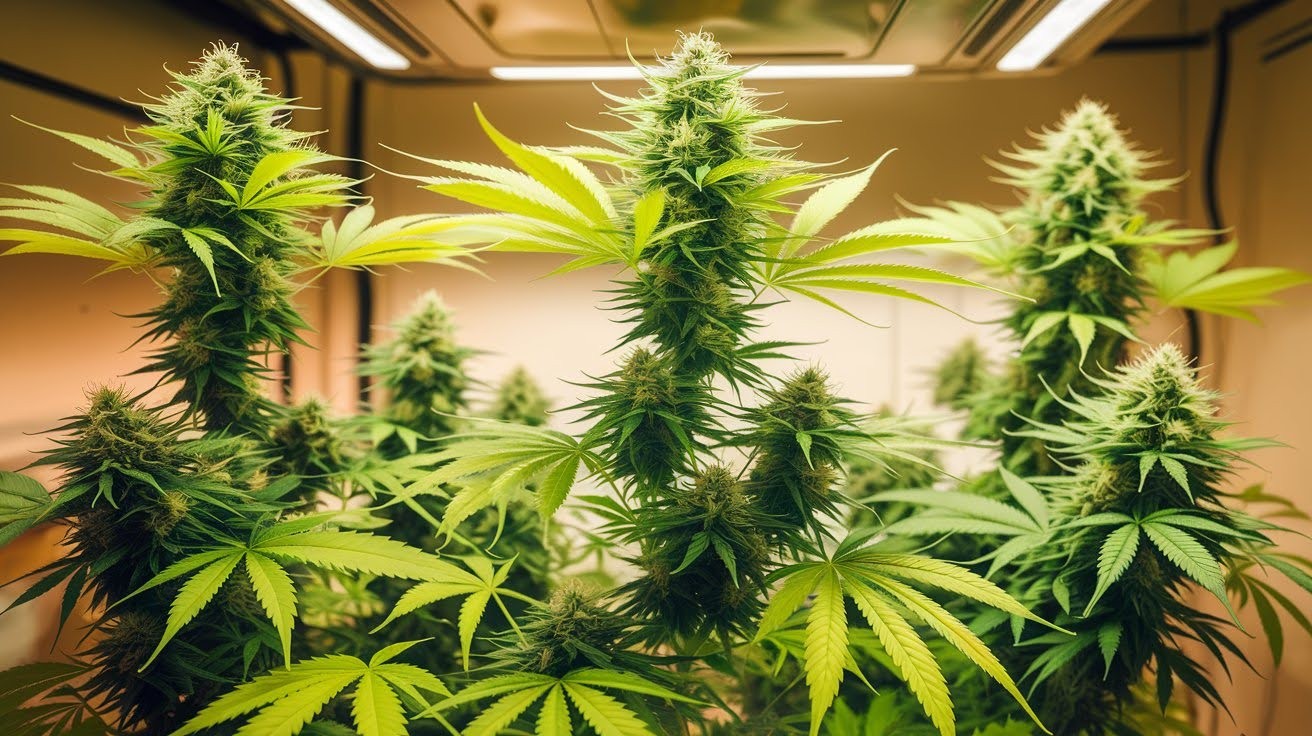
Visual improvements are apparent. New leaves stay bright green, stems get stronger, and those burnt edges stop spreading.
Growth metrics show increased size and better branch development. Your plant is thriving, not just surviving.
Flowering quality improves with better bud density and a more pungent smell. That’s the payoff you’re working for.
Prevent Future K Deficiency
Prevention beats treatment every time. Here’s how to avoid this problem altogether. Monitor weekly by checking pH and nutrient levels. Don’t wait for problems to show up.
Proper watering means no more drowning your plants. Overwatering washes nutrients away and damages roots. Quality water starts with testing your source.
Some tap water has minerals that block potassium absorption. Strain awareness matters more than most growers think. Some varieties are potassium hungry throughout their entire cycle.
I check my plants every Tuesday. Same day, same time, same routine. Consistency catches problems early. Prevention is cheaper than a cure. And your plants will thank you for it.
Conclusion
Fixing potassium deficiency cannabis problems doesn’t have to be complicated. You now know how to spot the signs early, treat them fast, and prevent them from coming back. Your plants are going to be fine.
Follow the steps I’ve shown you, and you’ll see improvement within days. Remember to check pH first, flush when needed, and match your treatment to your plant’s growth stage.
The key is acting quickly and staying consistent with your monitoring routine. Have questions about your specific situation? Drop a comment below and I’ll help you troubleshoot.
If this guide helped save your crop, share it with other growers who might be struggling with the same issue. Happy growing, and here’s to healthier cannabis plants!
Frequently Asked Questions
How quickly can I fix potassium deficiency in cannabis plants?
With proper treatment, you can stop symptom progression in 24-48 hours. New healthy growth appears within 4-7 days, and full recovery takes 2-3 weeks with consistent care.
What does a potassium deficiency look like in cannabis?
Yellow leaf edges on lower, older leaves that turn brown and crispy. Advanced stages show brown spots, leaf curling, weak stems, and poor bud development.
Can I use foliar spray to treat potassium deficiency in cannabis?
Yes, foliar feeding works great. Use 2% potassium sulfate solution sprayed early morning or late evening. Apply every 2-3 days until improvement shows.
What causes potassium deficiency in cannabis plants?
Common causes include insufficient feeding, wrong fertilizer ratios, overwatering, high salinity, poor soil structure, and nutrient competition from excess calcium or magnesium.
How much potassium do cannabis plants need?
The vegetative stage needs 40-80 ppm potassium. The flowering stage requires 156-234 ppm for optimal bud development. Research shows 40-80 ppm minimum for healthy biomass production.



